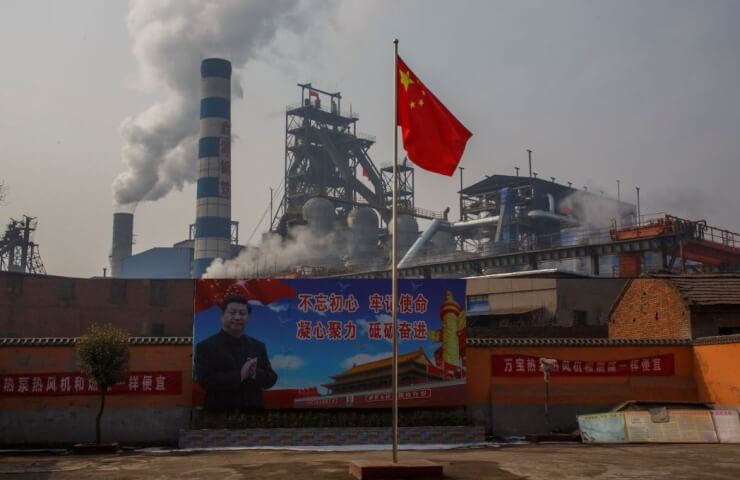The 26-page document, jointly released by the Ministries of Industry and Information Technology, Science and Technology and Natural Resources, is presented as a guide to strengthening key industrial commodity sectors, including steel, non-ferrous metals, petrochemicals and building materials during the current 14th five-year plan.
According to the document, the total production of industrial goods among all major industries in China in 2020 amounted to 27.4% of the total. Industrial sectors face significant challenges, the guidance highlights, including supply chain security threats posed by COVID-19 and de-globalization (reduced international exchange of goods and services), declining demand for key commodities such as steel and aluminum, and the need to achieve all industry targets for peak carbon emissions and carbon neutrality.
“The task (to achieve) the“ green ”and safe development of industrial products is becoming more and more urgent,” the ministries stressed.
China will continue to optimize its industrial structure
The guidelines clearly state that, as part of efforts to optimize the industrial structure of the country's steel industry, crude steel capacity cannot be increased over the five-year plan and should in fact be downsized.
This year, the Ministry of Industry and Information Technology (which oversees the steel sector) for the first time ruled that crude steel production in China cannot exceed 2020 levels, saying this is necessary to reduce emissions of carbon dioxide and other pollutants and to balance ... supply and demand for steel in the domestic market, according to Mysteel Global. In fact, preliminary estimates suggest that steel production this year could fall by 20-35 million tonnes compared to 2021.
Moreover, the guidance recommends that steel capacity utilization be maintained at a “reasonable level” and industrial concentration in this sector be further increased. This document emphasizes that the steel and aluminum sectors must continue to adhere to the country's capacity swap policy, according to which new production capacity can only be installed if old plants of equivalent or greater capacity are shut down and decommissioned in order to strictly control installed capacity. by sector.
Other measures that will be used as a means of curbing the growth of production capacity in these industries will include controlling the levels of emissions of carbon dioxide and other pollutants produced in this sector, as well as the amount of energy consumed, the guide says. >
Likewise, to boost industrial concentration within five years, ministries will encourage mergers and acquisitions, including trans-regional and transnational (public and private) mergers and acquisitions, the document says. In the petrochemical, iron and steel, non-ferrous and building materials sectors, the goal is to create 5-10 leading enterprises with key competitiveness and more than five cores of world-class advanced industrial goods clusters.
Green Shifts in Key Commodities
The guideline emphasizes that by 2025, energy consumption and carbon emissions in key industrial commodity sectors should be significantly reduced. In particular, energy consumption per ton of steel produced should be reduced by 2%, while carbon dioxide emissions from the aluminum sector should be reduced by 5% by 2025, the report said.
The steel sector is encouraged to continue to advance ultra-low emission transformation - a set of requirements for all steelmaking processes introduced since 2019 - and develop technologies including electric arc furnace steelmaking, high hydrogen blast furnace steelmaking. and carbon capture and storage.
Other industries, including coke and aluminum, copper, lead and zinc smelters, are encouraged to develop and promote their own ultra-low emission standards. These key commodity industries must also define their own plans to meet the central government's commitment to peak China's carbon emissions by 2030.
Supply chain security needs to be improved
Over the next five years, China will intensify efforts to identify and develop domestic mineral resources, especially those where supply is often limited, such as iron ore and copper, while such mining projects will be subject to preferential taxation policies.
To the manual





